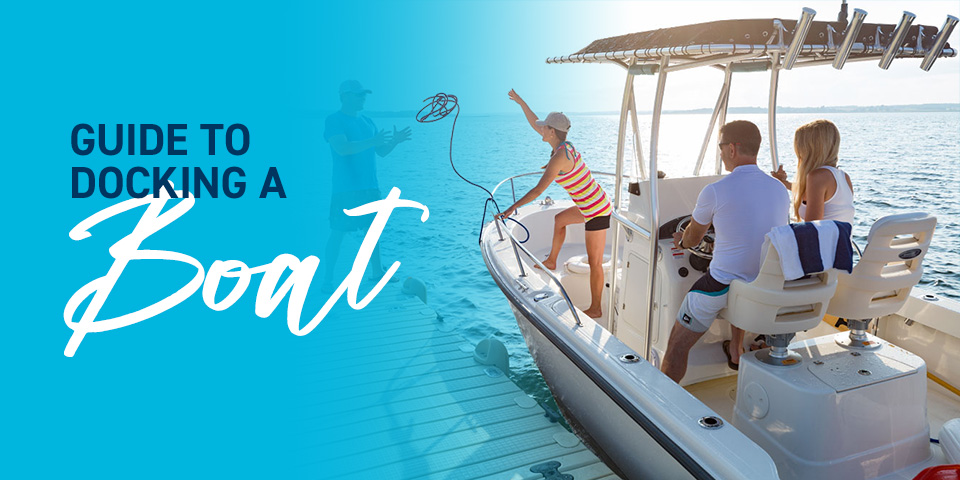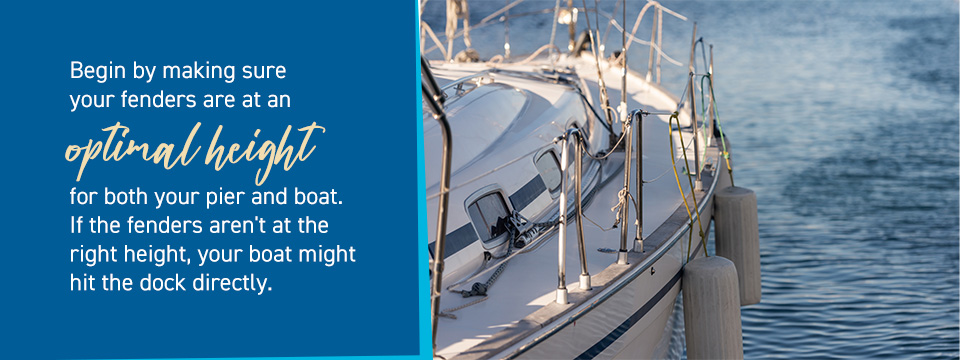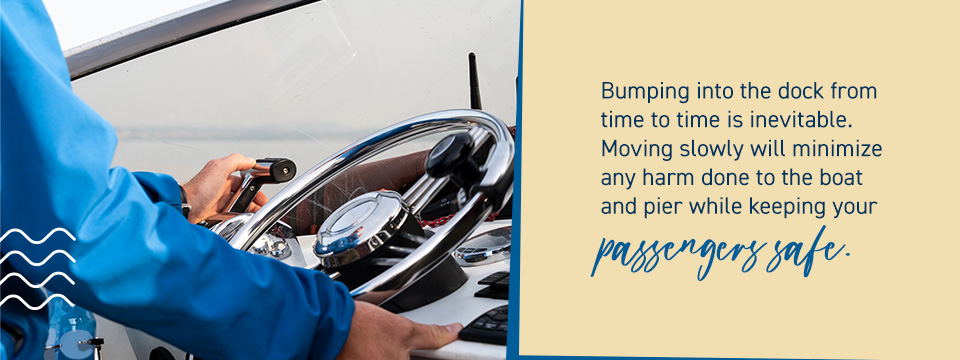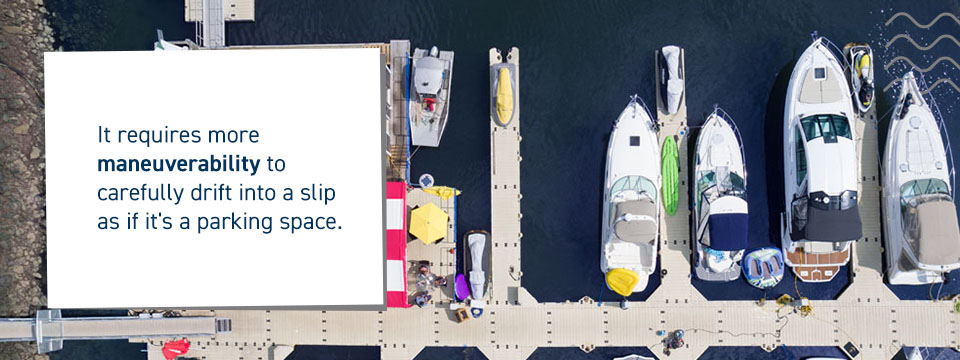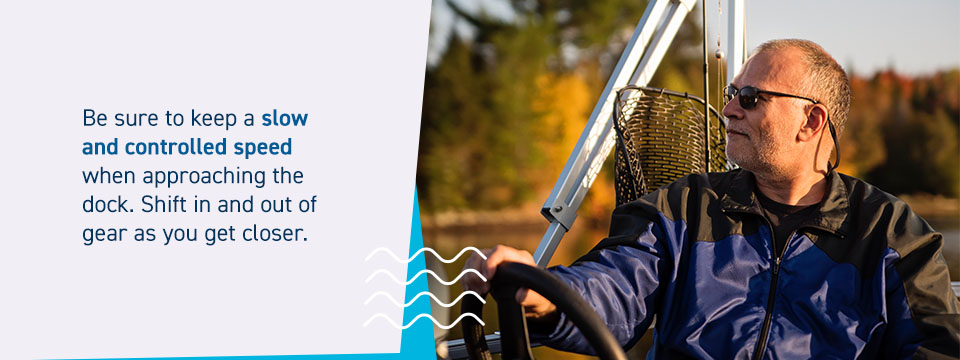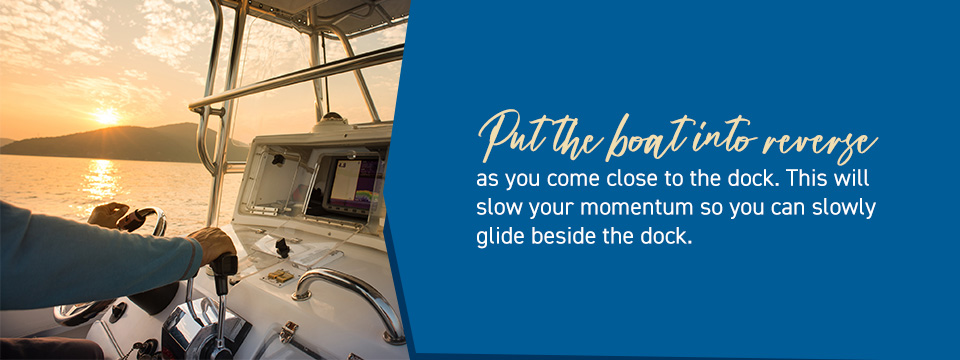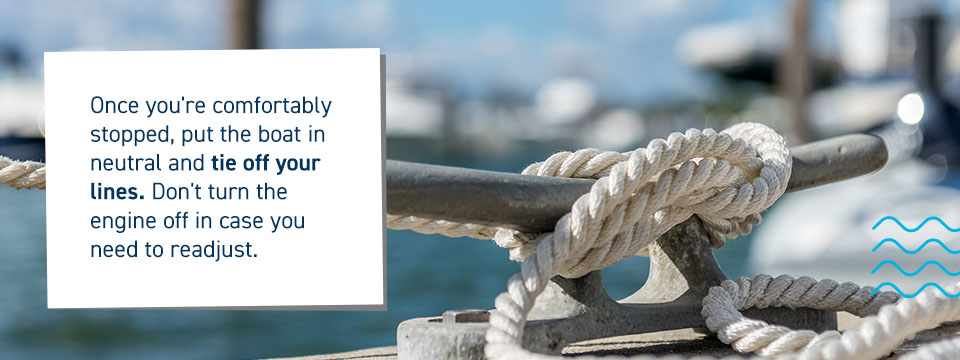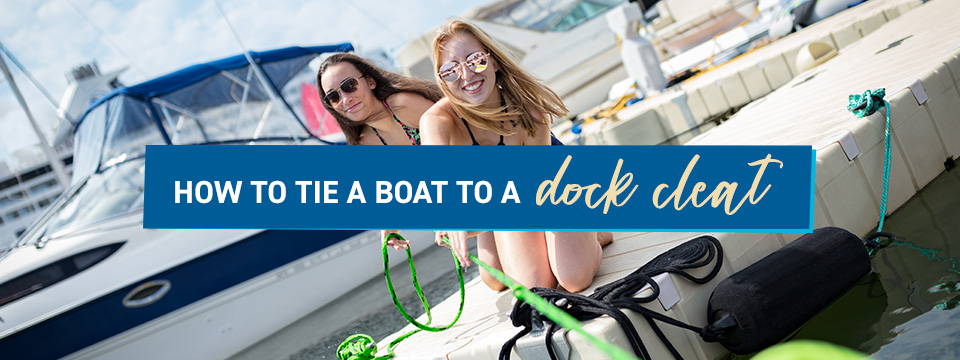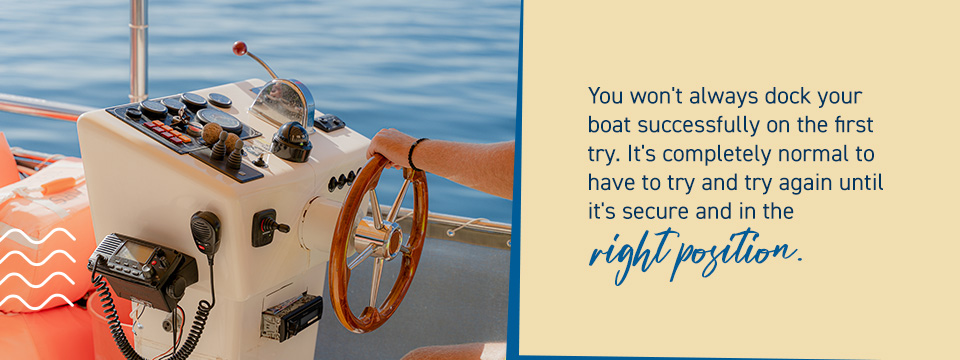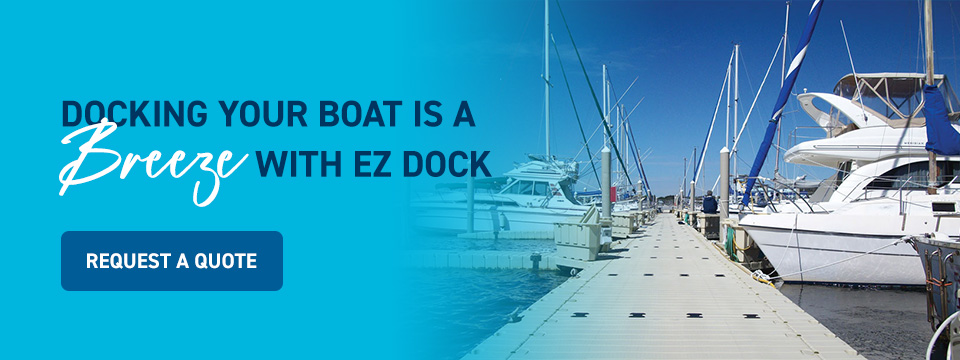Filters
Guide to Docking a Boat
There are many factors to consider during the process of docking a boat. Things like how you’re going to tie your line to the dock and the dock’s structure compounded with environmental factors like wind and water currents can complicate your entire approach. However, once you understand all the moving parts and practice it many times, it’s a skill you can master.
Use our guide to learn more about what goes into the process of docking a boat.
Read the full article or jump to a specific section:
- How to Dock a Boat: The Basics
- How to Dock in a Slip
- How to Dock a Pontoon Boat
- How to Dock a Boat by Yourself
- How to Dock a Boat in a Fast or Strong Current
- How to Dock a Boat With No Wind or Current
- How to Tie a Boat to a Dock Overnight
- How to Tie a Boat to a Dock Cleat
- How to Tie a Boat to a Dock Without Cleats
- Top Tips and Tricks for Docking a Boat
- How to Dock a Boat Using EZ Dock Floating Docks
- Docking Your Boat Is a Breeze With EZ Dock
How to Dock a Boat: The Basics
First, let’s explore the basics of boat docking. These steps will be the foundation of how you dock your boat in every instance, whether it’s at slip or in choppy weather conditions. After you learn how to pull a boat up to a dock and tie it, you can supplement your knowledge with what to do in more specific scenarios until you’re a boat docking professional.
1. Prepare the Boat
One of the keys to successfully docking your boat is to start preparing before approaching the dock. Doing a little prep can help you feel more confident in your docking skills.
Begin by making sure your fenders are at an optimal height for both your pier and boat. This ensures they meet the dock when you arrive. If the fenders aren’t at the right height, your boat might hit the dock directly.
Adjust the bow and stern lines attached to the boat cleats on the side of your vessel. Correct these so they’re in the right position when it’s time to fasten them to the dock. This step will save you time later.
If your vessel has gates, you should open these to improve visibility and make the docking process more accessible.
2. Be Aware of Your Surroundings and Conditions
When it comes to boating, it’s essential to familiarize yourself with the areas and conditions you’ll be dealing with so you’re aware of your surroundings. These factors will dictate how you’ll handle your boat.
Consider the path you plan on taking toward the dock. Are there other boats around? Make sure you have enough space to maneuver your boat into a slip or along the side of the dock. Ask yourself if there’s enough open area if you need to turn the boat around and what path you’ll take if you need to do so.
Factor in the current and wind conditions. The direction and speed of both will likely change how you want to approach the dock. How deep the water is will also impact how you’ll dock your boat.
3. Carefully Approach the Dock
When approaching the dock, you don’t want to slam into the dock or other vessels. Instead, you want to slowly and carefully align yourself for the easiest tying off experience.
The cardinal rule of docking is never to approach the dock faster than you’re OK with hitting it. Bumping into the dock from time to time is inevitable. Moving slowly will minimize any harm done to the boat and pier while keeping your passengers safe.
As you get closer to the dock, adjust your boat so you can approach at a 45-degree angle. When you slowly glide into position so your bow reaches the pier, you can then put the boat into reverse. Readjust so you direct your engine toward the dock, then reverse again until you position the stern to the dock.
4. Tie Up to the Dock
Once you’ve finally made it to the dock, it’s time to secure your vessel. Do so by affixing your bow and stern lines to the pier. The type of knot you’ll use will depend on the pier and where you’re fastening the lines.
Be sure to put the boat in neutral when it’s time to exit the helm. A helpful tip is to keep the vessel’s engine running while you tie off your lines. This trick will make it much easier to respond promptly if fast-moving winds or a strong current cause the boat to start drifting.
After you’ve tied off your boat, you can turn off its engine and make any necessary adjustments to the lines. Now, you can celebrate, as you successfully docked your boat.
How to Dock in a Slip
Docking your boat in a slip is a little more complicated than tying up to an open dock. It requires more maneuverability to carefully drift into a slip as if it’s a parking space. Follow these steps to learn how to dock in a slip:
- Begin by decreasing your vessel’s speed. It’s best to go just fast enough that you can still effectively steer the boat.
- When you slow down to an appropriate speed, position the boat so it’s moving toward the pier at a 45-degree angle.
- Pay close attention to how close you are to the slip. Once you’re about one full boat’s length away, you can change gears and put the boat into neutral.
- When you’re about half a boat’s length away, reposition the boat away from the pier.
- After you have your vessel in this position, you can shift your motor into neutral again.
- Center your steering wheel as your boat’s bow moves away from the dock at 45 degrees. Shift the motor into reverse.
- Next, you’ll want to shear off before the bow makes contact with the dock.
- Shift your motor and move ahead in a slow and controlled manner.
- Once the boat is in the slip, you can toss your lines around the cleats and secure them to the dock.
How to Dock a Pontoon Boat
Docking a pontoon boat can be a little tricky and often requires extra practice. Here are some steps to make the process more manageable:
- Prepare both your fenders and dock lines before approaching the dock.
- Adjust the height of your fenders according to the pier. Decide on which side of the boat you want to tie to the dock.
- Be sure to observe your surroundings. Take note of the strength and direction of the wind and current. See if there are other boats or high-traffic areas nearby.
- Come to the helm of your vessel to get a full picture and ensure you have a clear vision of your path to the dock.
- Now, open the front boarding gate on your boat to help you increase your visibility and get a better sense of your approach.
- Be sure to keep a slow and controlled speed when approaching the dock. Shift in and out of gear as you get closer.
- Shift into reverse to slow your vessel when you get about 10 feet away from the pier.
- Slowly glide into position and tie off your boat as usual.
How to Dock a Boat by Yourself
Docking a boat by yourself can be a bit trickier than when you have company on board to help. These steps can help you successfully dock your boat solo:
- Make docking a little easier on yourself by preparing before you start to drive towards the pier. Get your stern and bow lines in position and adjust your fenders to the dock’s height.
- Slowly approach the dock at about a 30-degree angle. Give yourself plenty of cushion room so you don’t run into the pier.
- Put the boat into reverse as you come close to the dock. This will slow your momentum so you can slowly glide beside the dock.
- When your boat aligns with the dock and is idle, carefully step out and onto the dock with a docking line in hand.
- Tie your boat, as usual, making sure to secure the part of the boat that needs to be anchored the most. Consider securing both your bow and stern lines for extra hold.
How to Dock a Boat in a Fast or Strong Current
You have to strike a delicate balance between too much and enough throttle when approaching a dock. This is an even bigger challenge when there are powerful currents at play. Here are some helpful tips for docking with strong currents:
- Plan your approach: Creating a game plan for your approach will help you feel more confident. Take note of the direction of the current and the path you plan on taking.
- Get your fenders and lines set: Having everything in its place will allow you to focus on other tasks.
- Drive the bow of your boat into the current: You can use the current to your advantage by driving into it for more control.
- Go slow: It’s always best to approach docking slowly, especially when dealing with the push and pull of a strong current.
An approach called ferry gliding can help you dock your vessel when natural elements are at play. Accomplish this by facing your boat towards the current and using the flow of water on either side of the boat to determine your direction. Use the current to help guide your boat into position alongside the dock.
How to Dock a Boat With No Wind or Current
While you can use the current and wind to your advantage, it’s helpful to have calm conditions on the water when docking. Follow these easy steps to dock a boat when there’s no wind or noticeable water current:
- Prepare by adjusting your bow and stern lines.
- Take a look at the path you plan on taking to the dock and ensure there’s enough space to maneuver if you need to readjust or turn around.
- Slowly approach the dock. When the water is calm, you’ll experience less resistance than when you’re driving into the current. Carefully move at a controlled speed to ensure you don’t accidentally bump into the pier.
- Approach the dock at a slightly narrower angle than when the currents or winds are strong.
- As you get closer to the dock, put the vessel in reverse to help bring it to a stop.
- Once you’re comfortably stopped, put the boat in neutral and tie off your lines. Don’t turn the engine off in case you need to readjust.
- Turn off the engine when you’re securely in position. You have now successfully docked your vessel.
How to Tie a Boat to a Dock Overnight
When tying your boat to a dock for extended periods of time, it’s important to consider the fluctuating tides and how they’ll impact your vessel. This is especially crucial for docks that are stationary and not floating because they don’t move with the water levels. The biggest mistake boaters make is tying their boats too tightly to the dock.
To secure your boat to the dock overnight without an issue, you’ll need to familiarize yourself with the changing tides in the body of water where you’re docking your vessel. You’ll take different steps depending on if the tide is rising or lowering.
If the water levels are going to rise, tie your dock lines slightly tight. This will keep the vessel from drifting away from the dock. If the water levels are going to lower, you’ll want to tie your boat with a looser line. Failing to do so can make the boat become suspended and turn sideways in the water. Make sure there’s just a little bit of bounce in your line.
Having the right amount of slack in your dock lines is key to successfully docking overnight.
How to Tie a Boat to a Dock Cleat
Using a dock cleat is the most common way to tie a boat to a dock. This is an important skill for all boaters to learn. Follow these steps to learn how to secure your line around these pieces of hardware:
- Begin by taking your line and wrapping it around the base of the cleat.
- Bring the line over the top of the cleat.
- Take the line back underneath the arm of the cleat that’s on the opposite side from where you originally wrapped the line.
- Wrap the line around this arm again and then pull it back over the top of the cleat. Your rope should look like a figure eight at this point.
- Create a bight with your remaining line and slip it over the cleat’s arm, tucking the free ending line underneath your last wrap.
- Pull the loose end of your line tightly to secure the knot.
How to Tie a Boat to a Dock Without Cleats
While most docks have cleat hitches these days, you may encounter a few without them. When a dock doesn’t have these hitches, you’ll need to tie your boat to the dock using a different method. There are two main ways to tie up your boat using a piling on the pier:
Clove Hitch
To accomplish a clove hitch knot around a piling, use the following steps:
- Place your line around the piling, leaving plenty of rope on both sides.
- Cross both sides of the line over each other in an “X” shape.
- Wrap the end of the open line around the piling again.
- Bring this line around the piling and tuck it under itself so that the ends of the line are in opposite directions.
- Pull the ends of the line taught.
Pile Hitch
A pile hitch is a more secure option than a clove hitch knot. If you plan on docking your vessel for an extended period, this option is usually a better choice. Follow these instructions to learn how to tie a pile hitch around a piling:
- Form a bight with your line and wrap it around the piling.
- Take the loop underneath the rope around the piling and bring it over the top.
- Open the loop and place it over the piling.
- Pull the rope taught to finish.
One of the greatest benefits of this type of hitch is that you can easily pull it right off the post without having to go through the untangling process.
Top Tips and Tricks for Docking a Boat
Docking a boat takes practice and patience. If you’re looking for ways to perfect your skills, consider these tips and tricks:
- Always take it slow: Safety should be your first priority. Drive slowly when approaching a dock to avoid damaging your boat and harming your passengers. Always be aware of your surroundings and move at a controlled speed.
- Do your research: Always determine the direction and speed of the wind and water currents where you’re boating. These factors will change how you approach the dock and can help you guide your vessel into position.
- Keep the engine running: When you’re finally alongside the dock, instead of turning off your engine, keep it running. This will allow you to react quickly if your boat begins to drift away. Simply hop back in and readjust.
- Don’t be afraid to try again: You won’t always dock your boat successfully on the first try. It’s completely normal to have to try and try again until it’s secure and in the right position.
No matter where or how you’re docking your boat, it’s important to keep these points in mind. When in doubt, always follow the basics of docking a boat. Additionally, practicing at home or on a friend’s slip can give you more confidence when it’s time to dock your boat in public or by yourself.
How to Dock a Boat Using EZ Dock Floating Docks
While traditional docks require boaters to consider the rise and fall of the water levels, floating docks are much more convenient. They move with the tides and remain at the same level as the boat, so you don’t have to worry about tying your lines too loose or tight.
Follow these easy steps to dock a boat to a floating dock from EZ Dock:
- Adjust your fenders so they’re at the height of the floating dock.
- Get your stern and bow lines ready so they’re in position when you arrive at the dock.
- Consider the wind and current directions and ensure the path you plan on taking has enough room if you need to readjust.
- Approach slowly to avoid hitting the floating dock. Align your vessel as you would for a traditional-style dock.
- When you align the boat with the floating dock, step onto it. Tie off your lines.
Docking Your Boat Is a Breeze With EZ Dock
Docking is easy with a floating boat dock from EZ Dock. Their buoyant design allows these docks to fluctuate with changing water levels. This feature means less worrying about how to best secure your boat to the dock and more time spent out on the open water.
You can configure our plastic dock sections into the shape and size that works best for your shoreline and lifestyle. They’re easy to install and durable enough to withstand harsh weather without warping or chipping.
Are you interested in learning more about our floating docks? Contact EZ Dock or request a quote today!

